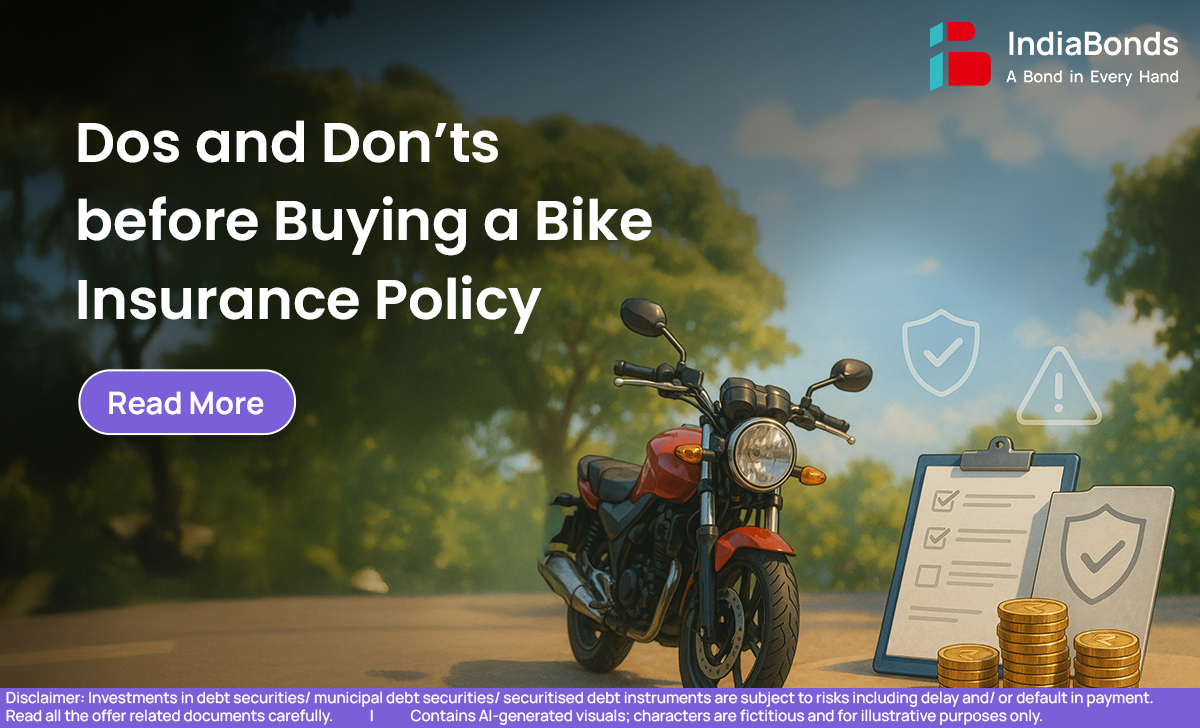For most riders, a two wheeler is daily transport and a valued asset. A careful buyer checks mileage and service costs but often rushes through the paperwork that protects the vehicle. A little homework on bike insurance can prevent claim shocks later. This guide lists the essential dos and don’ts before choosing a bike insurance policy, so a buyer rides with confidence and keeps costs under control.
Understanding Bike Insurance Policy
Every bike insurance contract is a promise written in fine print. Knowing the basics helps a buyer compare options sensibly.
- Cover types: Third party cover is mandatory by law and pays for injury or property damage to others. Comprehensive cover adds own damage protection for the insured bike.
- IDV (Insured Declared Value): The maximum amount payable for total loss or theft. Higher IDV means better protection but a higher premium.
- Deductibles: The part paid by the owner during a claim. Voluntary deductibles lower premiums but raise out of pocket costs at claim time.
- No Claim Bonus (NCB): A reward for claim free years that reduces the premium on renewal.
- Buying and renewing: Opting for bike insurance online offers quick comparison, instant policy documents, and easy add on selection.
Do’s Before Buying a Bike Insurance Policy
A smart shopper follows a few simple steps to get value and strong protection.
- Match cover to usage. A daily office commute in a busy city has a different risk profile than a rarely used weekend bike. If the bike is new or high value, comprehensive cover is prudent.
- Set a fair IDV. Pick an IDV close to the bike’s market price. An inflated IDV raises premium without real gain, while an undervalued IDV reduces payout.
- Check claim settlement record. Study the insurer’s claim ratio and service reviews. Fast approvals, a wide cashless network, and responsive support matter more than a small premium gap.
- Compare on a single screen. Use trusted marketplaces to compare bike insurance online. Filters for IDV, add ons, and deductible help find the best bike insurance for the rider’s needs.
- Disclose facts honestly. Declare accessories, modifications, previous claims, and usage type. Correct information avoids disputes at claim time.
- Read what is excluded. Water ingression, mechanical failure, and regular wear often sit outside standard cover. Knowing this avoids surprises.
- Look for savings the right way. Use NCB, anti theft devices, and long term policies for lower premiums rather than cutting essential cover.
- Evaluate the bike insurance plan document. Verify personal details, engine and chassis number, IDV, add ons, and policy dates before payment.
- Understand the bike insurance policy wording. Even a ten minute read clarifies duties during a claim, required documents, and timelines.
Check bike insurance add-ons
Add ons customise protection. Zero depreciation, roadside assistance, return to invoice, engine protect, and consumables cover are popular choices in bike insurance. Pick only those that suit the bike’s age, usage, and local risks, so the premium stays efficient.
Don’ts Before Buying a Bike Insurance Policy
Avoid these common errors that cost money and peace of mind.
- Don’t buy only on price. The cheapest quote may come with a low IDV, a narrow garage network, or tough deductibles.
- Don’t ignore policy tenure. Choosing very short covers invites missed renewals and breaks continuity benefits like NCB.
- Don’t skip inspection rules. For used bikes or lapsed policies, an inspection may be mandatory. Skipping it can delay or void cover.
- Don’t overlook location risks. Riders in flood prone or theft prone zones should prefer add ons like engine protect or RTI and not settle for a bare bones bike insurance plan.
- Don’t leave accessories uninsured. High value alloy wheels, crash guards, or aftermarket parts need declaration and add on cover.
- Don’t postpone renewal. A policy lapse breaks legal compliance and NCB continuity. Quick renewal through bike insurance online avoids penalties and re inspection.
- Don’t forget documents. RC, driving licence, pollution certificate, and previous policy help during proposals and claims under any bike insurance policy.
Conclusion
Choosing bike insurance is not complicated when a buyer knows what to check and what to avoid. The right cover, a sensible IDV, honest disclosure, and carefully selected add ons make claims smoother and premiums fair. With a little comparison done bike insurance online, the rider can secure the best bike insurance for the budget and ride without worry.
FAQ
What are the things to look for when buying a bike insurance plan?
A buyer should confirm the cover type, IDV, deductibles, add ons, garage network, and the insurer’s claim record. Reading exclusions, checking NCB carry forward, and verifying policy details before payment round out a careful purchase of a bike insurance plan.
Which is the best type of bike insurance plan?
For a new or high value bike, comprehensive cover is usually the best bike insurance choice because it includes own damage along with third party liability. Riders with older bikes that rarely leave the garage may prefer third party only, but they should accept that own damage is not covered.
Can I ride a bike without a valid insurance plan?
No. Third party bike insurance is mandatory under the Motor Vehicles law. Riding without it can lead to penalties, legal trouble after an accident, and personal financial exposure. Keeping digital copies handy from a bike insurance online purchase also helps during checks.
Which is a better bike insurance plan – Third party only or comprehensive?
Third party only keeps the premium low and meets legal needs, but it does not protect the insured bike. Comprehensive costs more and covers own damage, theft, fire, and calamities as per the bike insurance policy terms. For most daily riders, comprehensive is the safer, more balanced choice.
Disclaimer : Investments in debt securities/ municipal debt securities/ securitised debt instruments are subject to risks including delay and/ or default in payment. Read all the offer related documents carefully.
